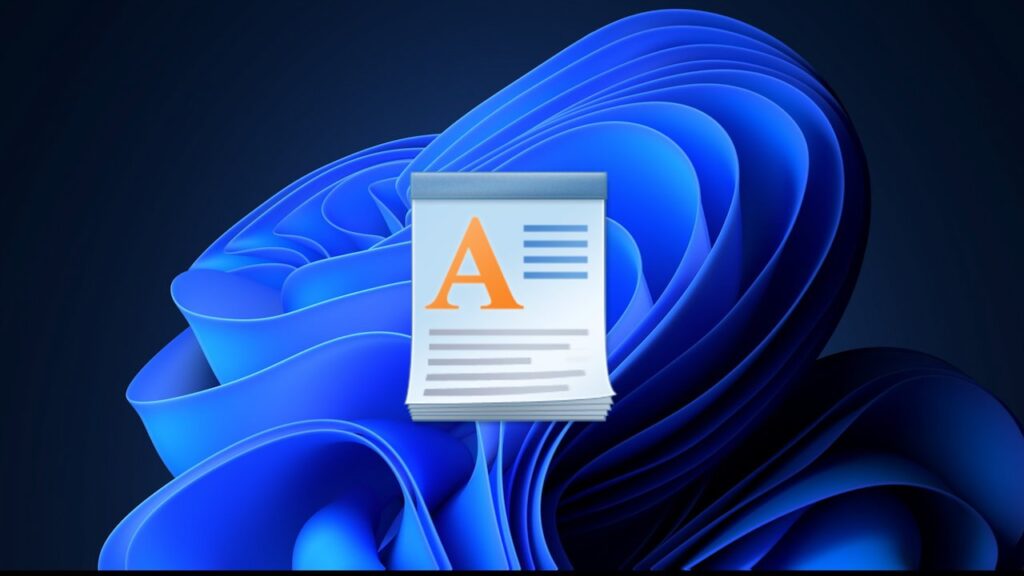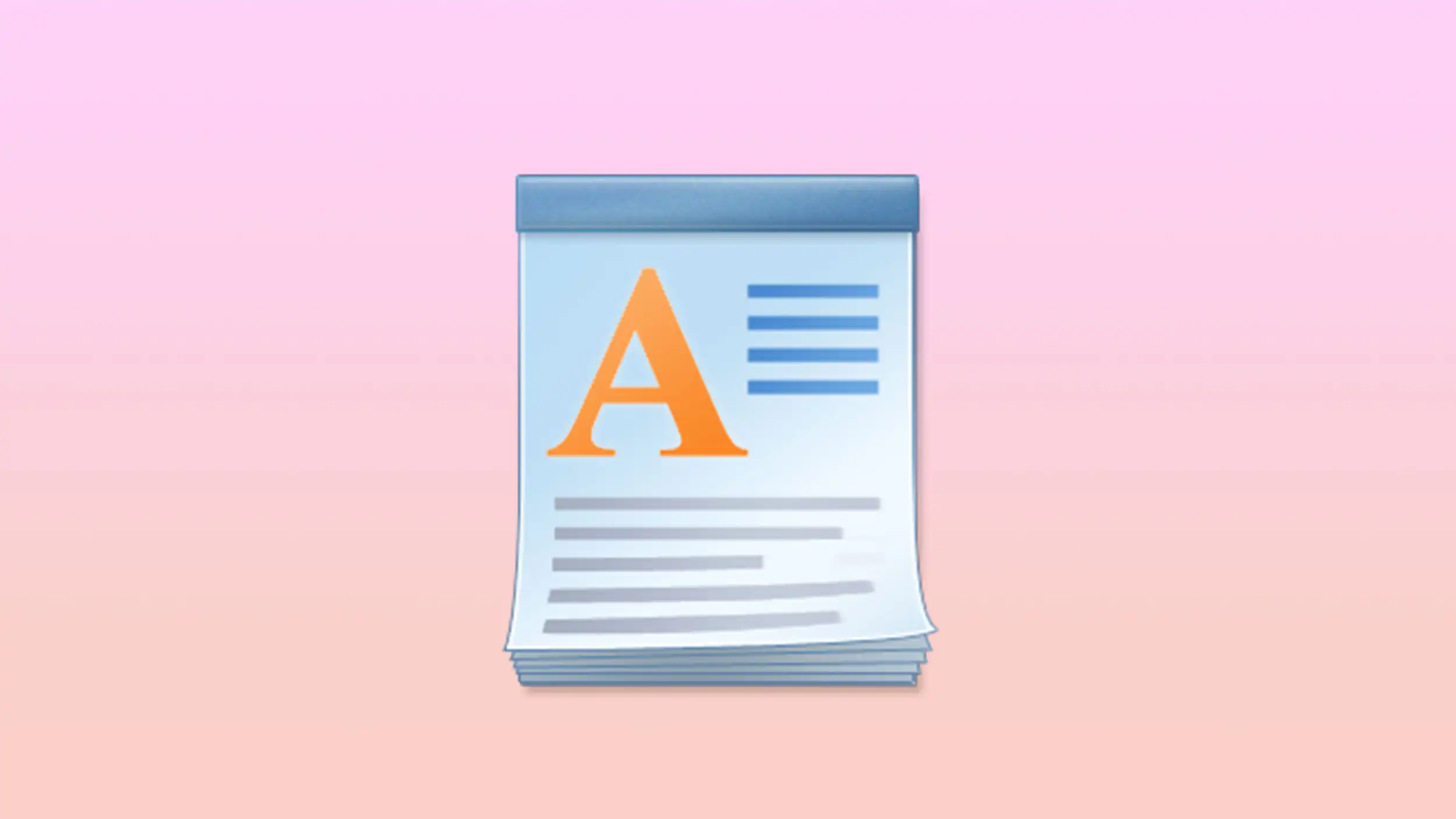- WordPad has been officially removed from Windows 11 24H2 and future versions.
- It is still possible to recover WordPad manually by copying files from previous versions.
- Lost or unsaved documents can also be recovered using specific tools and methods.

The classic and simple WordPad has been present in Windows for decades. However, with the arrival Windows 11 version 24H2, the popular text editor was officially removed from the Microsoft operating system. Fortunately, they still exist ways to recover WordPad in Windows 11.
The truth is that it can be recovered even in versions where it has been completely uninstalled. And there are also solutions available. If you need to recover lost, unsaved, or even accidentally deleted documents, we'll explain everything clearly in this article.
Why is WordPad missing in Windows 11?
Starting with the Windows 11 24H2 Update, WordPad is no longer preinstalled. It can also no longer be downloaded from the Microsoft Store or reinstalled from system settings. This measure is part of a strategy focused on modernizing Windows, integrating new tools powered by artificial intelligence and eliminating programs they consider obsolete or redundant, such as WordPad.
From Microsoft's point of view, WordPad is no longer necessary because There are more complete solutions such as Microsoft Word, which is included in Office and Microsoft 365., or even Notepad, which has recently received major updates, such as tab integration.
The problem is that, unlike Notepad, WordPad allowed working with RTF files (Rich Text Format)With its removal, Windows no longer comes with a default RTF file reader, which may be an inconvenience for many users.
How to Recover WordPad in Windows 11 24H2
If you are one of those who still believe that it still makes sense to have WordPad on Windows 11 and want to use it again, There is a simple method to bring it back. However, you'll need access to another machine that has an older version of Windows where WordPad is still installed, such as 22H2 or 23H2.
Here are the steps to restore WordPad in Windows 11:
- On a Windows 11 23H2 (or earlier) PC, open File Explorer and enter the following path:
C:\Program Files\Windows NT\Accessories - Inside that folder, identify the following files:
wordpad.exe
WordPadFilter.dll
and a language localization folder, for exampleen-USoes-ES. - Copy these three items to a USB flash drive or external storage device.
- Transfer them to your new Windows 11 24H2 computer and paste them into a folder (you can call it “WordPad”) anywhere on your system.
- Right-click on the file wordpad.exe, select “More options” and choose “Send to > Desktop (create shortcut)”.
- Once on the desktop, copy that shortcut and paste it into the following path:
C:\ProgramData\Microsoft\Windows\Start Menu\Programs - Open the Start menu, go to "All apps," and scroll down. You should see WordPad among the available programs, and you can pin it to the taskbar or Start to always have it handy.
This procedure is perfectly safe, since you are using original Microsoft files from previous versions of the system. The only disadvantage is that WordPad will no longer receive updates, therefore, compatibility issues may arise in the future.
Is it possible to set WordPad as the default app?
If you have followed the steps above and managed to restore WordPad in Windows 11, you can go a step further and set it as the default application to open specific files, such as .rtf or .txt.
To do this, follow these steps:
- Open Configuration in Windows (you can use Win + I).
- Go to the section Applications and then to Default applications.
- Find “WordPad” in the list and assign it to open the file types you want, such as .rtf.
In this way, although WordPad is no longer part of the official system, you can continue using it normally, as it was in previous versions.
Recover Unsaved or Deleted WordPad Documents
Beyond the program itself, many people are looking for ways to recover lost WordPad documentsThis could be due to an accidental deletion, an unexpected program shutdown, or a sudden system shutdown. Here are the main methods for recovering unsaved WordPad documents:
1. Recover from temporary files
Although it doesn't have auto-save, WordPad can generate temporary files. Here's how to find them:
- Press Win + R to open the execution window.
- Writes %AppData% and press Enter.
- The Roaming folder will open. Use the search option to locate files with the .tmp or .asd extension.
- Identify the document by date and restore it. Change the extension to .odt if necessary.
2. Recover a previous version of the file
This method only works if you had system protection enabledThe steps to follow are these:
- Right-click on the folder where the document was saved.
- Select Restore previous version.
- Choose a recent version and copy it to the desktop.
3. Use specialized recovery software
If the above methods do not work, you can resort to tools such as EaseUS Data Recovery o Tenorshare 4DDiGThese applications allow you to:
- Scan your hard drive for deleted or unsaved files.
- Preview documents before retrieving them.
- Save up to 2GB of data for free with EaseUS, for example.
Both programs are secure, compatible with all versions of Windows, and accept multiple file formats, including .rtf, .txt, .doc, or .odt.
In short, the removal of WordPad in Windows 11 doesn't necessarily mean the end of its use. Although Microsoft has decided to retire it, Users who need it can still restore it in a few simple steps. Furthermore, those facing document loss have multiple recovery methods at their disposal, whether through temporary files, previous versions, or specialized programs.
Editor specialized in technology and internet issues with more than ten years of experience in different digital media. I have worked as an editor and content creator for e-commerce, communication, online marketing and advertising companies. I have also written on economics, finance and other sectors websites. My work is also my passion. Now, through my articles in Tecnobits, I try to explore all the news and new opportunities that the world of technology offers us every day to improve our lives.

